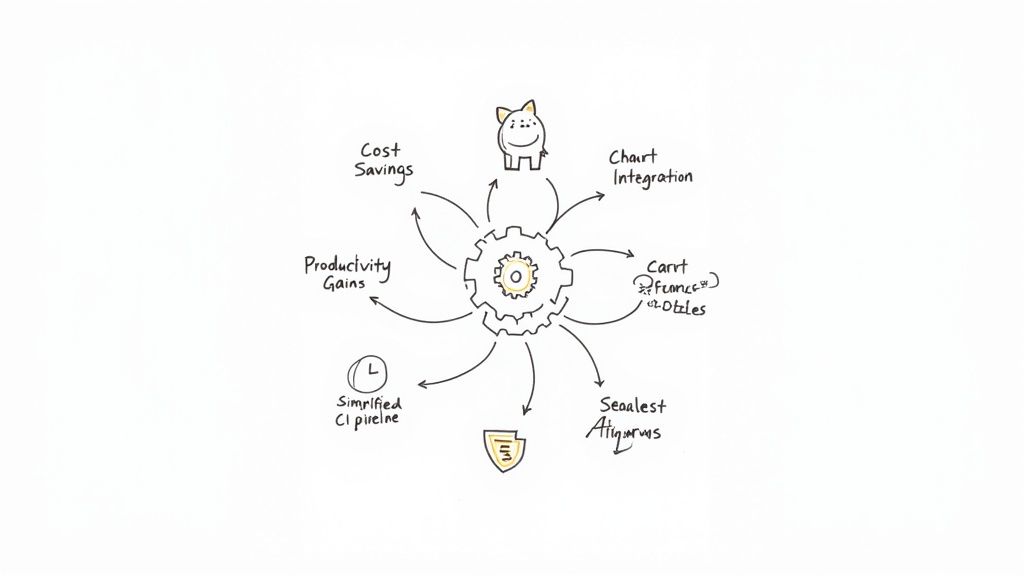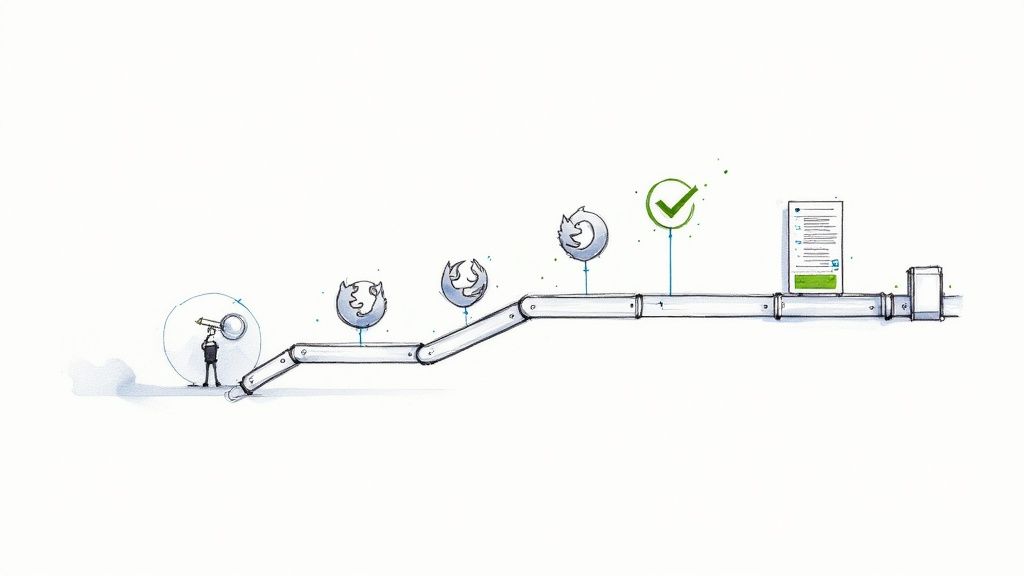Real User Monitor: Transform Your Digital Experience with RUM Analytics

Understanding the Power of Real User Monitoring
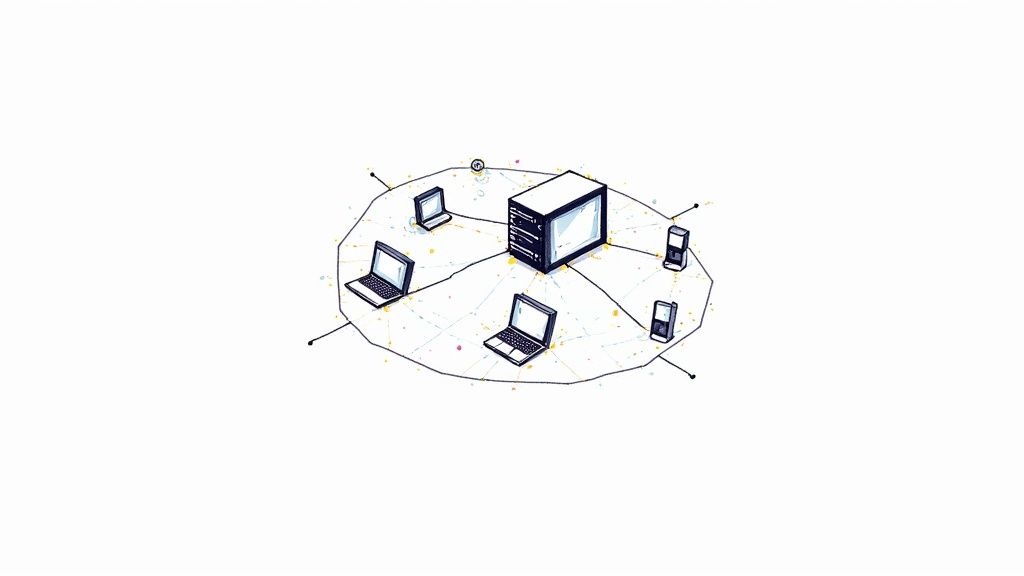
Real User Monitoring (RUM) shows exactly how people use your web applications in real life. While standard monitoring tools focus mainly on server performance, RUM captures the actual user experience. By seeing how your application performs for real visitors, you can spot problems and make improvements that matter.
Why Traditional Monitoring Falls Short
Standard server monitoring gives useful data about system health and resources. But it misses important details about how users interact with your site. Even if your servers run perfectly, users might still have a poor experience due to slow internet connections or browser extensions slowing things down. RUM fills this gap by measuring performance from the user's perspective.
RUM: A User-Centric Approach to Performance
RUM puts users first by gathering detailed data directly from their browsers and devices. It tracks key metrics like page load times, transaction speeds, and error rates. You can also break down the data by device type, browser, location, and network quality to understand how different groups of users experience your site.
RUM helps businesses improve their websites by providing immediate feedback on user interactions. A small piece of JavaScript code collects data about how people use your site and sends it for analysis. This helps IT teams quickly find and fix issues before they impact more users. For more details about RUM capabilities, check out Catchpoint's RUM guide.
Using RUM Data to Make Improvements
The information from RUM helps you make smart decisions about where to focus your efforts. For example, if RUM shows that users often leave a specific page because it loads too slowly, you know exactly what needs fixing. This targeted approach helps you make changes that directly improve user satisfaction and business results.
Driving Business Growth Through RUM Analytics
Real user monitoring helps businesses understand how customers actually use their sites and apps. This direct insight into user experiences helps teams make smart choices that improve both technical performance and business results. Many successful companies now use RUM data not just for troubleshooting but as a key tool for gaining an edge over competitors.
Understanding the Impact of RUM on Business Outcomes
RUM data guides decisions that directly affect revenue and growth. When companies spot and fix slow-loading pages through RUM analysis, they often see lower bounce rates and higher conversion rates. The data also reveals how users interact with content, helping create more engaging experiences that turn visitors into loyal customers. Poor performance leads to frustrated users who are unlikely to return or make purchases.
Real-World Examples of RUM-Driven Improvements
An e-commerce site used RUM data to uncover that their mobile checkout was much slower than desktop. After optimizing the mobile experience, they achieved a 15% increase in mobile sales. In another case, a software company used RUM to find a major bug affecting certain users. Quick detection and fixes prevented customer losses and protected their reputation.
Calculating the ROI of RUM
To measure RUM's value, companies look at metrics like reduced downtime costs and increased revenue from better conversions and customer retention. The end-user experience monitoring market, which includes RUM, shows strong growth potential. Current estimates put the global customer experience monitoring market at USD 2.80 billion in 2023, with projected growth of 24.9% yearly from 2024 to 2030. These numbers show how much businesses value detailed user insights. Learn more about market trends in the end-user experience monitoring industry.
Identifying Quick Wins and Building a Business Case
Start with easy improvements that quickly show RUM's value. Focus on fixing slow-loading high-traffic pages or common user errors that RUM reveals. Use these early wins to make the case for more advanced monitoring. For example, showing a 5% conversion rate increase after fixing performance issues can justify investing in additional RUM capabilities.
Long-Term Strategic Benefits of RUM
RUM provides lasting strategic value beyond quick fixes. Continuous monitoring of user behavior and performance helps businesses spot trends and improve experiences before problems arise. This creates ongoing improvement that helps companies stay competitive. RUM data guides smart decisions that keep digital experiences running smoothly as user needs change.
Building Your RUM Implementation Strategy
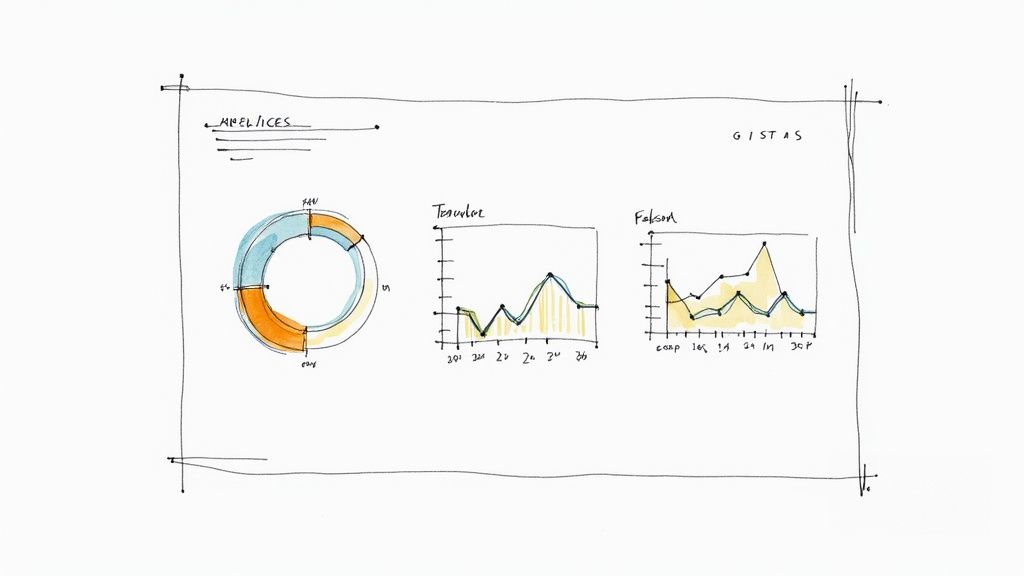
Setting up real user monitoring (RUM) needs thoughtful planning to be effective. Getting it right means picking tools that fit your needs, adding them smoothly to your setup, and tracking what matters most. A clear plan helps you get the most from RUM.
Selecting the Right RUM Solution
Finding the perfect RUM tool depends on your specific situation. Think about how many users you have, how complex your systems are, and what your team knows how to use.
- Size and Growth: Pick a tool that works for your current traffic and can grow with you
- Works with Your Tools: Make sure it plays nice with what you already use
- Simple to Use: Choose something your team can actually work with day-to-day
Each RUM tool is different - some are basic, others pack lots of features. Pick one that fits your budget and what your team can handle. This makes setup easier and helps you see results faster.
Integrating RUM With Your Existing Infrastructure
Getting RUM working well means fitting it into what you already have. You'll need to add tracking code to your site or app carefully. Good planning helps avoid disrupting users while getting accurate data.
- Smart Code Setup: Put tracking code where it catches important user actions without slowing things down
- Focus Your Data: Only collect what you'll actually use to keep analysis clear
- Check Everything: Test thoroughly to make sure data is right and nothing breaks
Starting small with just some users lets you spot and fix problems early. Then you can roll it out to everyone once it's working well.
Avoiding Common Implementation Mistakes
Watch out for these common issues that can trip up your RUM setup:
- Too Much Data: Collecting everything makes analysis harder - focus on what matters
- Missing Context: Remember things like device types and locations to understand the full story
- Poor Planning: Know what you want to measure before you start
Good preparation helps dodge these problems. Know your goals, pick your metrics, and keep an eye on the key user paths.
Gaining Early Wins With RUM
Start with quick improvements to show RUM's value right away. Look for obvious performance issues you can fix fast.
- Speed Up Slow Pages: Find and fix pages that take too long to load
- Fix Common Errors: Tackle JavaScript errors that bug users the most
- Better User Paths: Make important flows like checkouts work better
When you can show real improvements, it's easier to get support for more RUM work. Each win helps prove the value of keeping tabs on performance and making things better for users.
RUM Analytics: Making Data Work for You
RUM (Real User Monitoring) data helps teams understand exactly how users experience their applications. But it's not enough to just collect data - you need to know what to measure, how to present it, and how to use those insights to improve your product.
Key Metrics That Matter
Top performing teams focus on specific metrics that directly connect to their goals. For instance, online stores often track sales completion rates, while software companies might emphasize user engagement. Here are the essential metrics to watch:
- Page Load Time: The total time for pages to display fully - slower loads often cause users to leave
- Time to First Byte (TTFB): Shows how quickly your servers respond to requests
- Error Rate: Tracks how many users hit technical problems
- Apdex Score: A simple 0-1 rating that shows if users find your site's speed acceptable
- Interaction Time: Measures how long key tasks take, like completing a purchase
Creating Clear Dashboards
Good data visualization helps teams spot trends and issues quickly. Your dashboards should be simple to understand and show what matters most. Different teams need different views - developers might want detailed performance data, while managers need high-level summaries.
- Keep visuals clean and easy to read
- Focus on data that leads to clear actions
- Create different views for technical and business teams
Setting Up Regular Reports
Consistent reporting helps keep everyone informed and aligned. Each report should match its audience's needs and include specific next steps.
- Pick a schedule that works for your team (weekly/monthly/quarterly)
- Point out the most important findings
- Include clear suggestions for improvements
Using Advanced Analysis
Leading teams use sophisticated methods to get more from their RUM data:
- Pattern Spotting: Find recurring issues before they become problems
- Unusual Event Detection: Quickly notice when metrics suddenly change
- Future Forecasting: Use past data to prepare for upcoming challenges
By using RUM analytics effectively, teams can truly understand their users' experience and make smart improvements. This focus on real user data leads to better products that keep customers happy and help businesses grow.
Creating Exceptional User Experiences with RUM Insights

Real User Monitoring (RUM) helps businesses understand how actual users interact with their websites and apps. This data lets companies make targeted improvements to create better digital experiences. RUM goes beyond basic metrics like page load times - it reveals how users actually behave and helps teams focus their efforts where it matters most.
Making Smart Improvements with Data
When you track real user behavior, you can spot opportunities to make things work better. For example, if RUM data shows many users abandon a checkout form at step 3, you can focus on fixing that specific problem. Here's what companies can do with these insights:
- Find problem areas where users get stuck or leave
- Try different versions of key pages and features
- Run A/B tests based on actual user data
One online store used this approach to improve their checkout flow and saw 20% fewer abandoned carts.
Creating Personal Experiences
RUM data also helps create experiences that feel more personal and relevant. By understanding what different users prefer and how they behave, companies can adjust their sites to match those preferences.
- Highlight popular features based on usage patterns
- Create user groups with custom navigation paths
- Suggest relevant products using real-time behavior
A news site used this strategy to show personalized headlines, which boosted engagement by 30%.
Tracking Success and Making Changes
It's important to measure whether changes actually help users. RUM data shows if improvements make a real difference in how people use your site.
- Define clear goals for site performance
- Monitor changes in real-time through dashboards
- Keep improving based on what the data shows
One software company followed this process to improve their interface, leading to 15% more active users.
Smart Ways to Set Priorities
RUM data helps teams decide which problems to fix first. Here's a simple way to organize improvements:
Using RUM Data to Plan:
| Priority Level | What to Look For | What to Do |
|---|---|---|
| High | Issues affecting core user tasks | Fix right away with urgent updates |
| Medium | Problems in common but optional areas | Keep an eye on it and fix in regular updates |
| Low | Issues in rarely used features | Note for later and fix during major updates |
Using RUM helps companies like Mergify build better experiences that keep users happy and coming back. By watching how real people use their products, businesses can keep making smart improvements that truly matter to their users.
The Future of Real User Monitoring
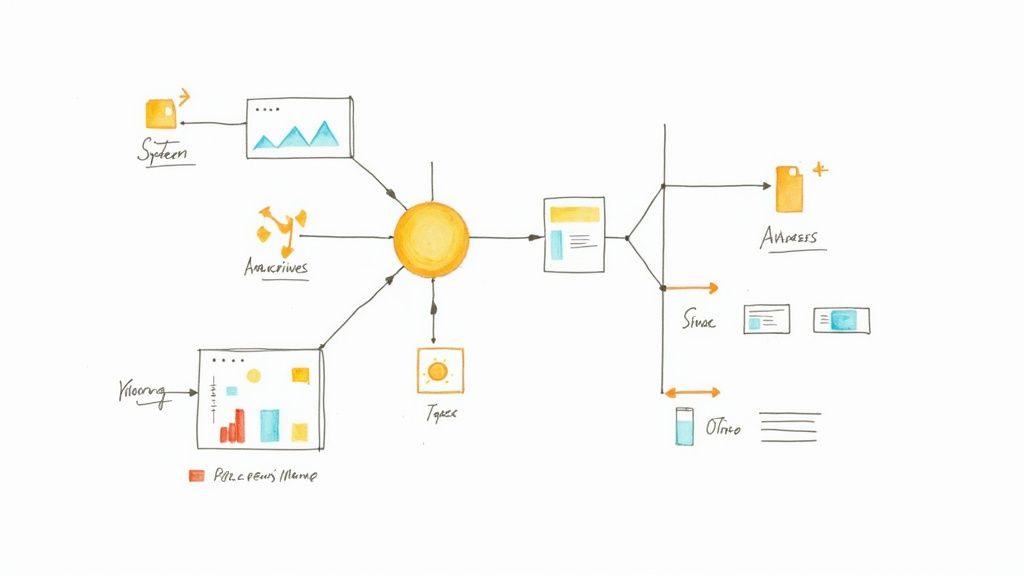
Real User Monitoring (RUM) continues to grow and adapt as technology advances. The field is experiencing significant changes in how companies track and improve user experiences. Let's explore the key developments shaping RUM's future.
The Rise of Artificial Intelligence in RUM
AI is bringing major improvements to real user monitoring. Advanced algorithms can now process huge amounts of user data and spot issues that humans might miss. This enables teams to find and fix problems before users notice them.
A practical example: AI systems analyze past performance data to spot potential slowdowns during busy periods. They can also quickly detect unusual patterns, like sudden error increases, and alert teams immediately. This smart automation lets technical staff focus on making bigger improvements rather than just putting out fires.
The Impact of Evolving Web Technologies
Web technology keeps changing, and RUM needs to keep up. Modern websites using single-page applications (SPAs) and progressive web apps (PWAs) create new monitoring challenges. These complex sites need more sophisticated tracking methods.
Future RUM tools will need to track detailed interactions within these complex web apps. They'll also need to show exactly how different technologies affect speed and performance, ensuring smooth experiences across all devices and platforms.
Emerging Capabilities in Digital Experience Management
RUM is becoming part of a bigger picture in managing online experiences. New tools combine RUM data with other monitoring types and business metrics to give a complete view of user experience. This helps companies see how website performance directly affects sales and customer happiness.
For example, when RUM data connects with customer databases, companies can see how slow loading times might cause customers to leave. This complete approach helps businesses make smart choices that improve both user experience and business results.
Preparing for the Future of RUM
Smart companies are getting ready for these changes by choosing flexible monitoring solutions that can grow with their needs. They're also training their teams to better understand and use performance data.
By using AI-powered insights and staying current with web technology changes, companies can deliver excellent online experiences that keep customers coming back.
Want to improve your development process? Learn how Mergify can help enhance your code quality and workflow


